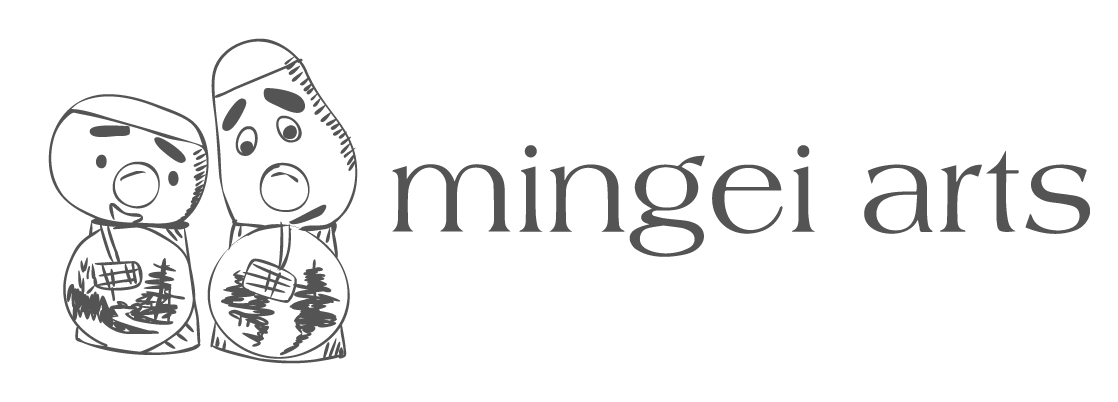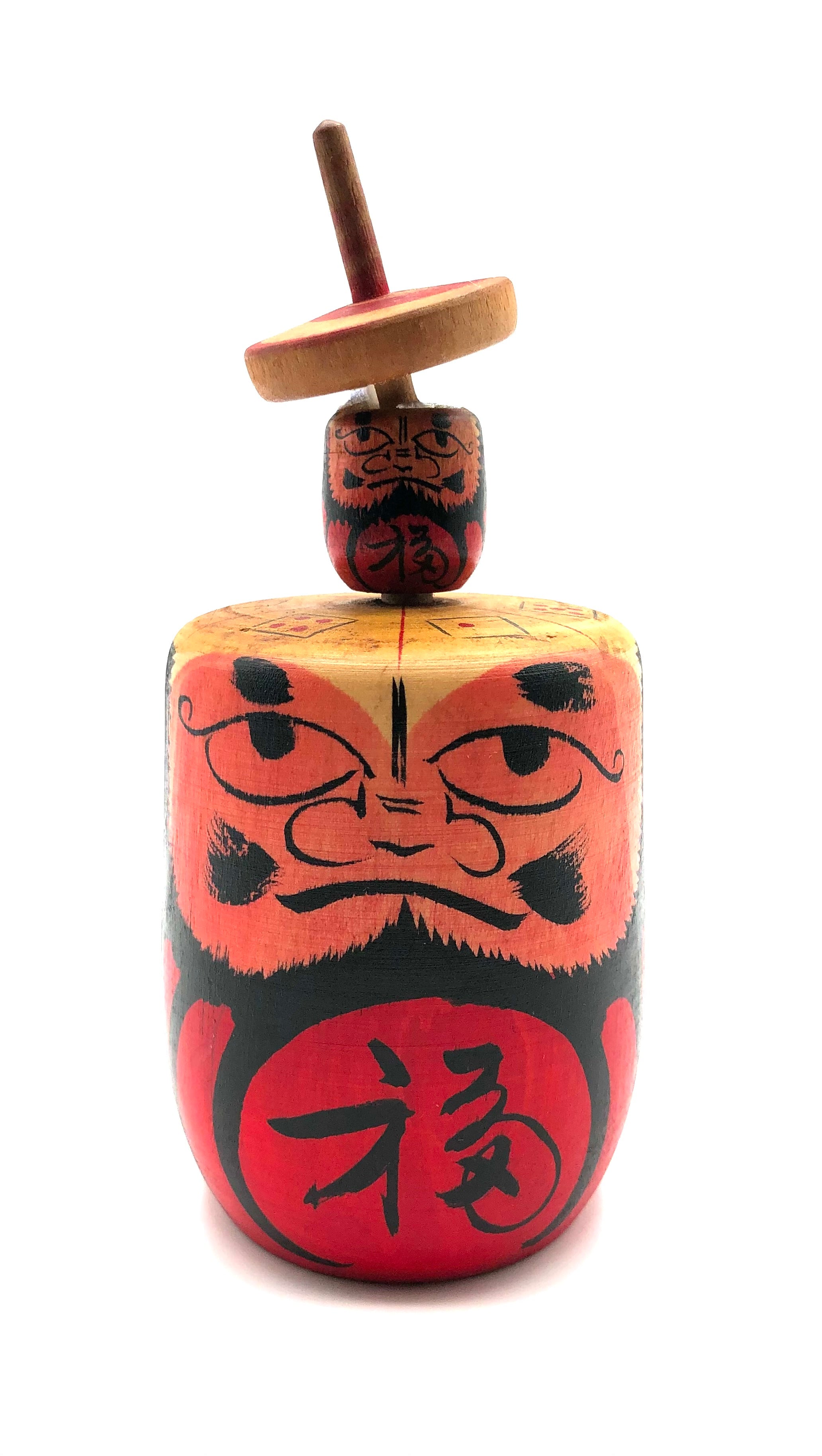
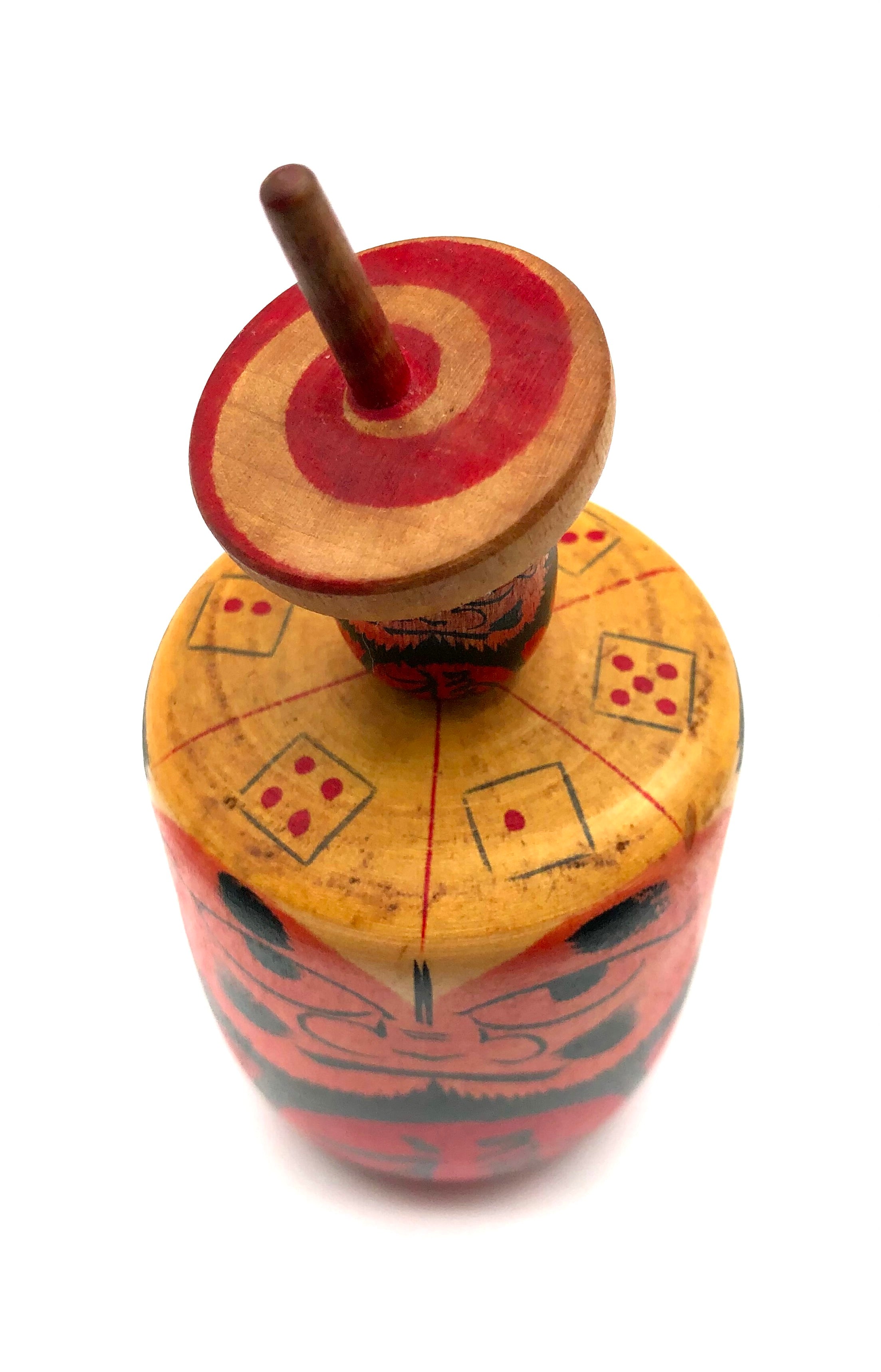
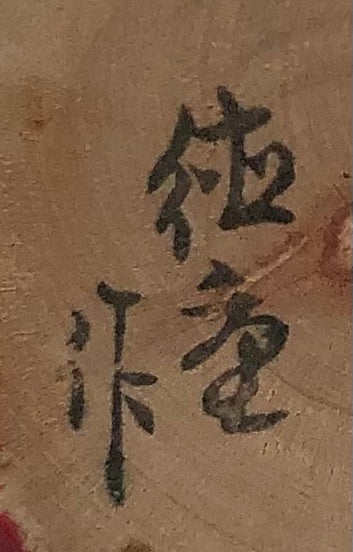
Vintage Japanese Daruma Gambling Game by Tsuta Family (1944-)
Dimensions: 6-0"h x 2-0-3/4"dia.
In Japan, Koma Asobi (top spinning) gets its name from the Buddhist Holy man, (Daruma) whose character decorates the container of this simple game, which has been enjoyed by children and adults. It is especially popular during the New Year holidays in Japan. A spinning top is a toy that can be spun on an axis, balancing on a point. As with this Daruma game, the top is a miniature figure of Daruma with a spinning top balanced on this head and has historically been used for gambling and prophecy.
The body of the piece has a full representation of Daruma including the use of his characteristic meditative eyes and eyebrows, large nose, and expressive mouth/lips. On the top of the main Daruma figure are dice-shaped graphics to facilitate the same. A good luck graphic is seen on the front of the figure. Some role-playing gamers still use tops to augment dice in generating randomized results related to one's future; it is, in this case, referred to as a spinner. Japanese tops are considered some of the very best in the world. The piece is signed on the bottom, Tsuta, but we cannot translate the remaining portion of the signature, except because of the subject we think it is Mamoru, (1928-2009), the father of Fumio who is still producing.
Condition: Excellent condition with minimal effects for use and aging. Retains original handprinted color and design with all associated parts intact. The top is well-balanced and spins perfectly. There are no missing elements, no scratches or imperfections related to daily use with all detailed elements intact.
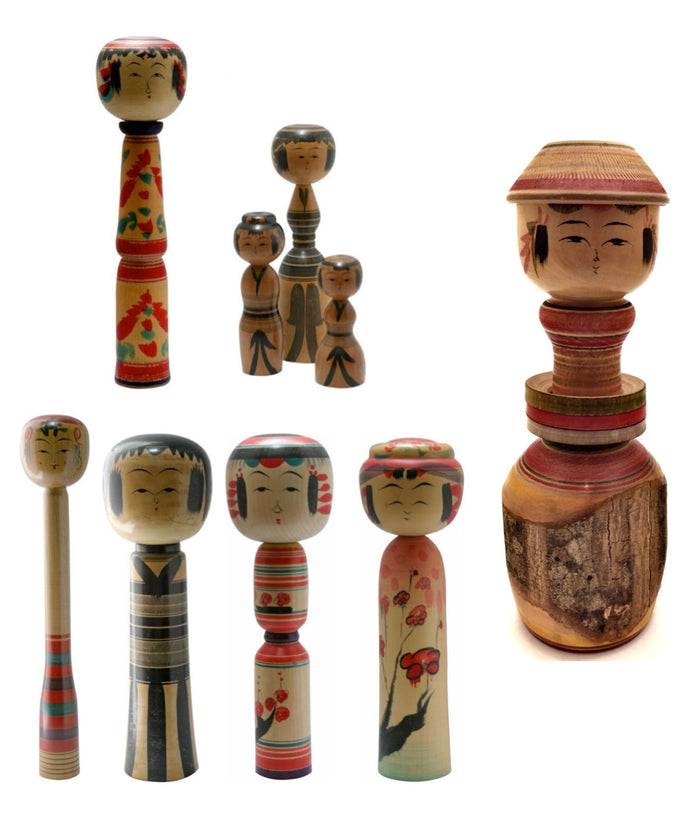
Japanese Traditional Kokeshi
Yajirou-Kei (Family)
Prefecture: Miyagi
Origin:
This strain of Kokeshi is said to have been an offshoot of the Tougatta strain and is far less refined. That eventually developed into a unique style that remains today. The creators of these dolls hail from the small farming village of Yajirou-machi near Kamasaki Onsen, in Miyagi Prefecture, once a farming village between two tall mountains. The Kiji-shi (woodworkers) divided their time between farming and woodcraft. Those who made kokeshi in their spare time sent their wives to the nearby Kamasaki Onsen to sell their work to tourist shops and onsens.
Collector's note – characteristics/painting style:
The majority of this style has distinct waists, or (kubire), where the body tapers inward, with a wider, flared base similar to a kimono, thus making them very stable. The upper body usually has a hand-painted collar with horizontal stripes encircling the body, as in the Rokoru-moyo style, and vertical stripes running below the waist to the base of the doll. However, Yajirou dolls can also be found with a series of chrysanthemum petals running down the front of the body, or a branch of plum blossoms, as the only decoration. Yajirou dolls are some of the most brightly painted of the traditional family group. Utilizing a veritable rainbow of colours, from the usual red and black to green, yellow, and even blue and purple, they are available in probably the widest range of shapes. Some also have a painted beret-like feature or a bun on their heads, similarly painted with a red center spot. Less common are Yajirou who have conical hats known as Suge-Gasa. Typically seen is one lid or double eyelids and a cat or pick-shaped nose. Yajirou kokeshi have been made from cherry wood, camellia, and maple, but the preferred wood is white dogwood, (Mizuki). And finally, both Yajirou and Tougutta dolls are sometimes created with loose rings circling the waists. Carved from the same wood as the body, which is a very meticulous method! This treatment is referred to as 'Yamiyo' style kokeshi.

Leading, Craftsmen:
Niiyama, Keimi, 1925, (Shirabu, Yamagata) - Master Niiyama, Keimi. No additional published information
Niiyama, Fukutaro, 1898-1965 - No additional published information
Niiyama Fukuo, 1922, (Yajiro Shironishi, Miyagi) - Master: Niiyama, Fukutaro. No additional published information
Niiyama, Hisaharu, 1942-2008 - No additional published information
Niiyama, Sanai (Master) - No additional published information
Oizumi, Kiyoni - No additional published information
Saito Masao, 1932, (Shiroishi, Miyagi) - Master: Sato, Tsugio. No additional published information
Sato Tatsuo, 1928-2009, (Yajiro Shiroishi , Miyagi) - Master: Sato, Imasaburo. No additional published information
Sato Yoshiaki, 1936, (Shiroishi Miyagi) - Master: Sato, Tatsuo. No additional published information
Sato, Koichi, 1936, (Shiroishi, Miyagi) - Master:Hamatsu, Heisaburo. No additional published information
Explore & Learn More about Yajirou-Kei (Family)